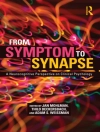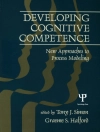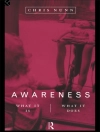Practical, up-to-date guidance on identifying Specific Learning Disability
Essentials of Specific Learning Disability Identification provides accessible, authoritative guidance on specific learning disability (SLD), with the most up-to-date information on assessment, identification, interventions, and more. Contributions by leading experts examine multiple theoretical orientations and various identification approaches for dyslexia, dyscalculia, dysgraphia, and other common SLDs. Emphasizing real-world utility, this book provides important information for professionals who work with children and youth at risk; many of the SLD identification practices can be put to work immediately, and the expert coverage offers many strategies and interventions for student support in the classroom. This new second edition has been updated to align with the most current understanding of SLD manifestations, diagnostic assessment, and evidence-based interventions, and includes new material covering nonverbal learning disability, speech-language impairment, general learning difficulties, and differentially diagnosing SLD from other conditions.
Early SLD identification and the right kind of help can raise the trajectory of a child’s life. This book provides in-depth information to facilitate accurate identification and appropriate intervention to help you help the children in your care.
* Understand how SLD manifests in academic performance
* Learn theory- and research-based approaches to SLD identification
* Examine the latest information about new aspects of SLD determination
* Utilize appropriate and effective intervention strategies for student support
If a child’s learning disability is caught early, and the correct type of support is provided, that child gets the chance to develop the skills that lead to achievement in school and beyond. As a high-incidence disorder, SLD affects 10-15 percent of the general population, making successful identification an essential skill for those who work with children. Essentials of Specific Learning Disability Identification provides authoritative guidance and practical methods that can help you start changing children’s lives today.
Tabela de Conteúdo
Foreword ix
Series Preface xiii
Acknowledgments xv
Part One Definitions and Manifestations of Specific Learning Disabilities 1
One Overview of Specific Learning Disabilities 3
Marlene Sotelo-Dynega, Dawn P. Flanagan, and Vincent C. Alfonso
Two The Neuropsychology of Reading Disorders: How SLD Manifests in Reading 29
Steven G. Feifer
Three How SLD Manifests in Mathematics 59
Michèle M. M. Mazzocco and Rose Vukovic
Four How SLD Manifests in Writing 103
Nancy Mather and Barbara J. Wendling
Five How SLD Manifests in Oral Expression and Listening Comprehension 145
Nickola Wolf Nelson and Elisabeth H. Wiig
Six Nonverbal Learning Disabilities 195
Margaret Semrud-Clikeman
Part Two Methods and Models of Specific Learning Disability Identification 219
Seven A Response to Intervention (RTI) Approach to SLD Identification 221
Jack M. Fletcher and Jeremy Miciak
Eight Using Student Response to Intervention to Identify SLD: Requirements, Recommendations, and Future Research 257
Matthew K. Burns, Kathrin E. Maki, Kristy Warmbold-Brann, and June L. Preast
Nine Cognitive Neuroscientific Contributions to Theoretical Understanding of SLD 285
Scott L. Decker, Rachel M. Bridges, and Tayllor Vetter
Ten Integrating Instructionally Relevant SLD Diagnoses, Patterns of Strengths and Weaknesses, and Positive Home-School Partnerships: Free and Appropriate Public Education for All 307
Nicole Lynn Alston-Abel and Virginia Berninger
Eleven Dual Discrepancy/Consistency Operational Definition of SLD: Integrating Multiple Data Sources and Multiple Data-Gathering Methods 329
Dawn P. Flanagan, Vincent C. Alfonso, Megan C. Sy, Jennifer T. Mascolo, Erin M. Mc Donough, and Samuel O. Ortiz
Twelve Pattern of Strengths and Weaknesses Made Easy: The Discrepancy/Consistency Method 431
Jack A. Naglieri and Steven G. Feifer
Thirteen Core Selective Evaluation Process (C-SEP) and Dual Discrepancy/Consistency (DD/C) Models for SLD Identification: A Case Study Approach 475
Gail M. Cheramie, G. Thomas Schanding Jr., and Kristin Streich
Part 3 Special Considerations in Specific Learning Disability Identification 503
Fourteen Difference or Disorder: Assessment of SLD with an English Learner 505
Samuel O. Ortiz, Kristan E. Melo, and Meghan A. Terzulli
Fifteen Differential Diagnosis of SLD Versus Other Difficulties 549
Benjamin J. Lovett and David A. Kilpatrick
About the Editors 573
About the Contributors 575
Author Index 577
Subject Index 597
Sobre o autor
VINCENT C. ALFONSO, PHD, is Dean of the School of Education at Gonzaga University in Spokane, Washington, and a certified school psychologist and licensed psychologist in New York State. He is co-editor of Essentials of Planning, Selecting, and Tailoring Interventions for Unique Learners and co-author of Essentials of Cross-Battery Assessment, Third Edition and The Achievement Test Desk Reference: A Guide to Learning Disability Identification, Second Edition.
DAWN P. FLANAGAN, PHD, is Professor of Psychology at St. John’s University in Queens, NY. She is also an Affiliate Clinical Professor at Yale Child Study Center, Yale University School of Medicine in New Haven, CT. She serves as an expert witness, SLD consultant, and test/measurement consultant and trainer for organizations both nationally and internationally. She is a co-developer of Cross-Battery Assessment and its corresponding software system (X-BASS). Her most recent books include Essentials of WISC-V Assessment; Clinical Use and Interpretation of the WJ IV: Scientist-Practitioner Perspectives; Essentials of Specific Learning Disability Identification, 2e; and Essentials of Planning, Selecting and Tailoring Interventions for Unique Learners. Her forthcoming book is Contemporary Intellectual Assessment: Theories, Tests, and Issues, 4e.












